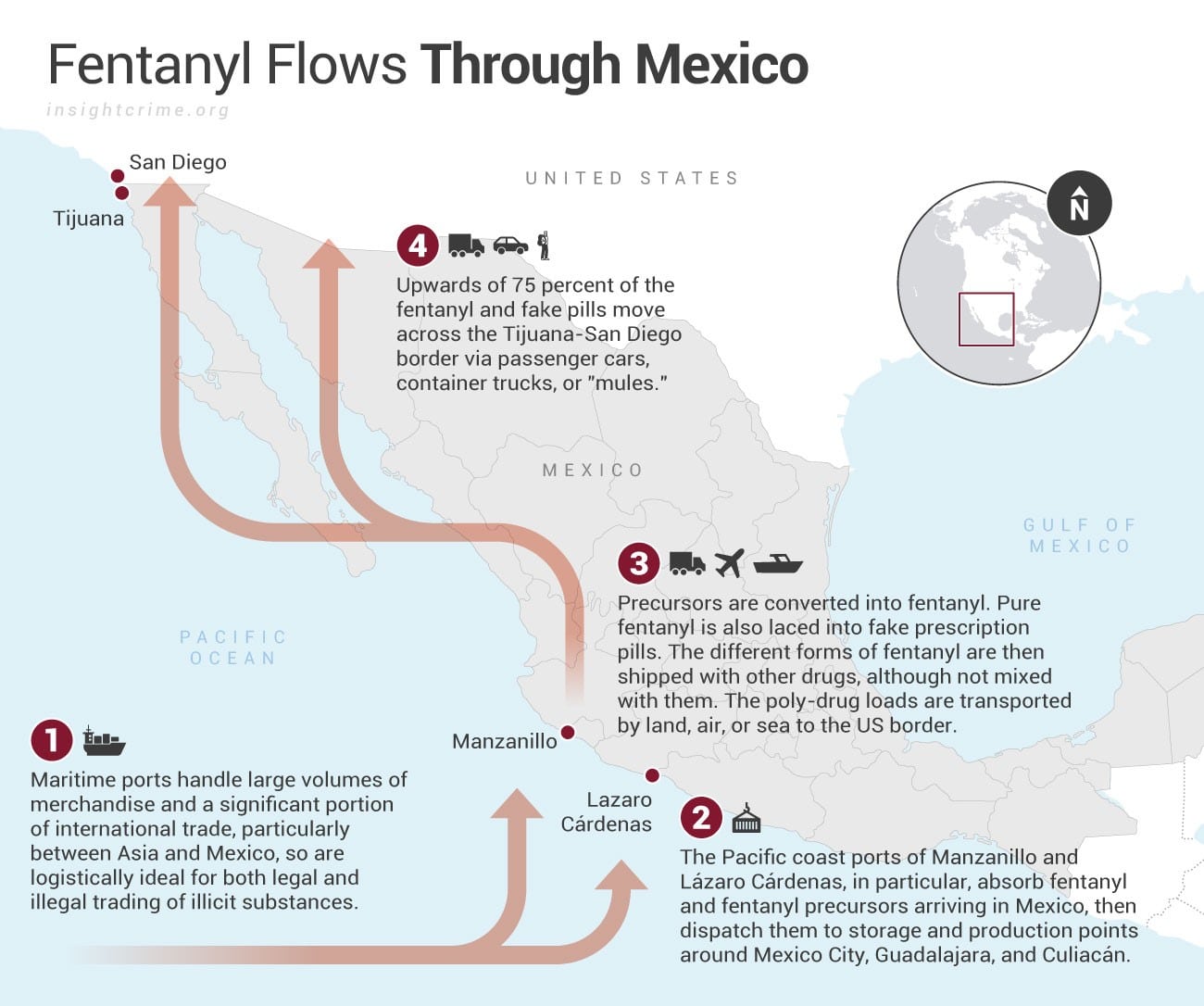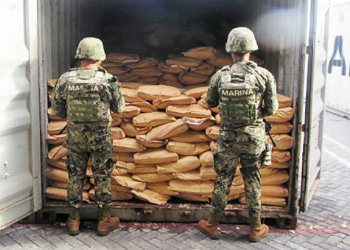Authorities in Mexico continue to make large seizures of the deadly synthetic opioid fentanyl, even as China, the world’s top producer of the drug, tightens regulations.
Mexico’s armed forces seized almost 24 tons of fentanyl at the Pacific port of Lázaro Cárdenas in southwest Michoacán state on August 26, Excelsior reported.
Authorities discovered the drug on a Danish-flagged vessel that had left China. The ship’s cargo manifest identified the product as calcium chloride, but the substance in fact tested positive for fentanyl after authorities performed a random sampling test, according to Excelsior. The shipment was destined for Sinaloa, just up the coast to the north.
Mexico has seen a string of seizures of synthetic drugs and their precursor chemicals during the month of August.
SEE ALSO: Mexico’s Role in the Deadly Rise of Fentanyl
At the start of the month, customs officials at the international airport in Mexico City detected a shipment of two kilograms of precursor chemicals used to make fentanyl.
Later on August 8, federal police in Baja California state, along the US-Mexico border, seized 4,000 fentanyl pills and more than 16 grams of synthetic drugs presumed to be methamphetamines, according to an official press release.
One kilogram of fentanyl costs about $32,000, which can be used to make one million pills with a street value of more than $20 million, according to law enforcement officials. Yet just two milligrams of the drug is a lethal dose for most people, according to the Drug Enforcement Administration (DEA).
China accounts for the vast majority of illicit fentanyl and its precursor chemicals that reach the United States. US officials have pressured the country to crack down on the drug’s production. In April of this year, officials in China banned all variants of the powerful opioid in an effort to cut off supply.
InSight Crime Analysis
Continued large seizures of fentanyl in Mexico show that the Chinese ban has not yet hampered the supply line of the Mexican groups ferrying the opiate north to the United States.
The ban was aimed at stopping Chinese manufacturers from exploiting a loophole that allowed them to change the molecular structure of the drug in such a way that it was not explicitly banned. “Organized crime groups have effectively circumvented initial controls by … basically creating new yet-to-be-controlled versions,” one United Nations expert told the South China Morning Post last year.
But China’s vast chemical and pharmaceutical industry continues to be a source of illicit fentanyl. Of around 5,000 pharmaceutical manufacturers, regulators in China only actively monitor a small fraction, according to research by the Rand Corporation think tank.
SEE ALSO: Mexico News and Profiles
As InSight Crime reported in a detailed investigation done in collaboration with the Mexico Institute at the Woodrow Wilson International Center for Scholars, the Sinaloa Cartel and Jalisco Cartel New Generation (Cartel de Jalisco Nueva Generación — CJNG) — Mexico’s most powerful criminal groups — are largely responsible for importing and producing illicit fentanyl and its precursors.
The port of Lázaro Cárdenas in Michoacán, where the latest seizure took place, is one of the key entry points for these products into the country. This is also one of the ports that President Andrés Manuel López Obrador recently said was under the control of organized crime groups.

(Graphic c/o InSight Crime 2018 Fentanyl Report)
The US mailing system has been exploited for smaller fentanyl shipments, but mass movement of the drug to the United States is largely through criminal groups in Mexico. As the country’s criminal landscape has grown increasingly fractured, organizations like the CJNG and Sinaloa Cartel have come to rely on subcontractors to facilitate their trafficking operations.
Growing demand for synthetic drugs in the United States, which is currently in the grips of a vicious opioid crisis that saw fentanyl overdose deaths exceeded those from heroin for the first time in 2016, has even driven shifts in illegal drug production in Mexico. Farmers who used to earn a living by growing poppy for the heroin trade have seen a sudden drop in prices and demand for their illicit crops.

